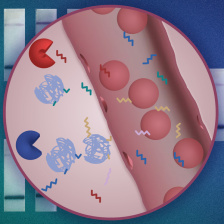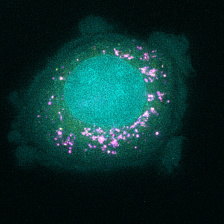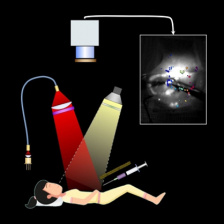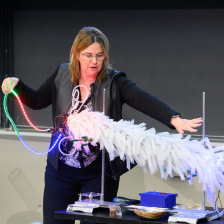
Koch Institute professors Paula Hammond, Sangeeta Bhatia and Angela Belcher, and MIT alumna Parul Somani at the Koch Institute's "Intercepting Ovarian Cancer" event in November 2023. Hammond, Bhatia, and Belcher presented on their multi-dimensional approaches to the early detection of cancer, while Somani discussed her experiences as a BRCA1 carrier, breast cancer survivor, ovarian cancer previvor, and cancer care-giver.
MIT Koch Institute
February 7, 2024
A women’s cancers research initiative has been established at MIT with the ambitious goal of developing transformational, engineering solutions to the early diagnosis, detection, and interception of hard-to-detect cancers. The new initiative is led by professors Angela Belcher, Sangeeta Bhatia, and Paula Hammond, all faculty members of MIT’s Koch Institute for Integrative Cancer Research.
At the outset, the initiative will support the creation of an array of technologies that will improve ovarian cancer screening and diagnosis for both at-risk populations, such as people with BRCA gene mutations, and global populations, as well as enhance treatment approaches and help guide patient decisions about prophylactic surgeries, fertility preservation, and other important considerations. Both detection and treatment remain key challenges in ovarian cancer, since the disease is usually not detected until advanced stages, when tumors—and tiny metastases—have already spread throughout the abdomen. In the future, the team plans to expand their focus to other hard-to-treat women's cancers.
“We have embraced the audacious goal of developing an accessible detection and diagnostic technology for ovarian cancer in the next five to ten years,” said Belcher, James Mason Crafts Professor and Professor Biological Engineering.
STIC-ing it to ovarian cancer
Several of the team’s suite of tools will be designed around STIC lesions, tiny clusters of precancerous cells that form in the fallopian tubes. Because they appear several years before the onset of ovarian cancer, STIC lesions could make excellent targets for early detection, as well as for imaging and treatment approaches. In this regard, the researchers’ early diagnosis efforts leverage new understandings of ovarian cancer’s origins in the fallopian tubes, rather than the ovaries themselves.
A foundational component of the team’s arsenal is a powerful imaging platform developed by the Belcher Lab. This sensitive, radiation-free technology can look deep within the body to visualize fallopian tubes and other tissues that are ‘invisible’ to current imaging methods, supporting both detection and treatment approaches.
Complementing this system will be a ‘smart’ ultrasound contrast agent developed by the lab of Sangeeta Bhatia, the John J. and Dorothy Wilson Professor of Health Sciences and Technology and of Electrical Engineering and Computer Science. The Bhatia Lab has been adapting their nanoparticle sensors platform to render fallopian tubes visible to ultrasound imaging and increase the range of options for imaging. New nanoparticle formulations will home in on STIC lesions, adhere to the target tissue, and release the contrast agent locally so that the fallopian tubes can be imaged via ultrasound.
Researchers in the lab of Institute Professor Paula Hammond have designed a set of nanoparticle formulations for ovarian cancer treatment. In addition to showing a strong preference for tumor cells over healthy cells, these nanoparticles offer precise control over where cargoes are delivered. The effectiveness of many therapeutics, such as cancer immunotherapies or siRNA, depends on whether they are transported inside the cell or to its surface. The group is adapting its nanoparticle formulations to work with the Bhatia and Belcher lab technologies to support diagnostic and imaging goals and treatment advances.
Studies of these nanoparticle-based treatment approaches can themselves yield actionable new biological insights about tumors. For example, when the Hammond and Belcher labs recently collaborated on developing a therapeutic vaccine for cancer, they discovered a new and surprising role for a subtype of T cells in modulating immune responses and its underlying mechanisms of activation. Understanding how these T cells are activated can inform improvements to existing immunotherapies or design of future treatments to make them effective in more patients.
The initiative and its collaborative team, recently showcased at Intercepting Ovarian Cancer and Belcher’s presentation of the 2023 Mildred R. Dresselhaus Lecture, have been supported in part via a recent gift from the Gray Foundation.



